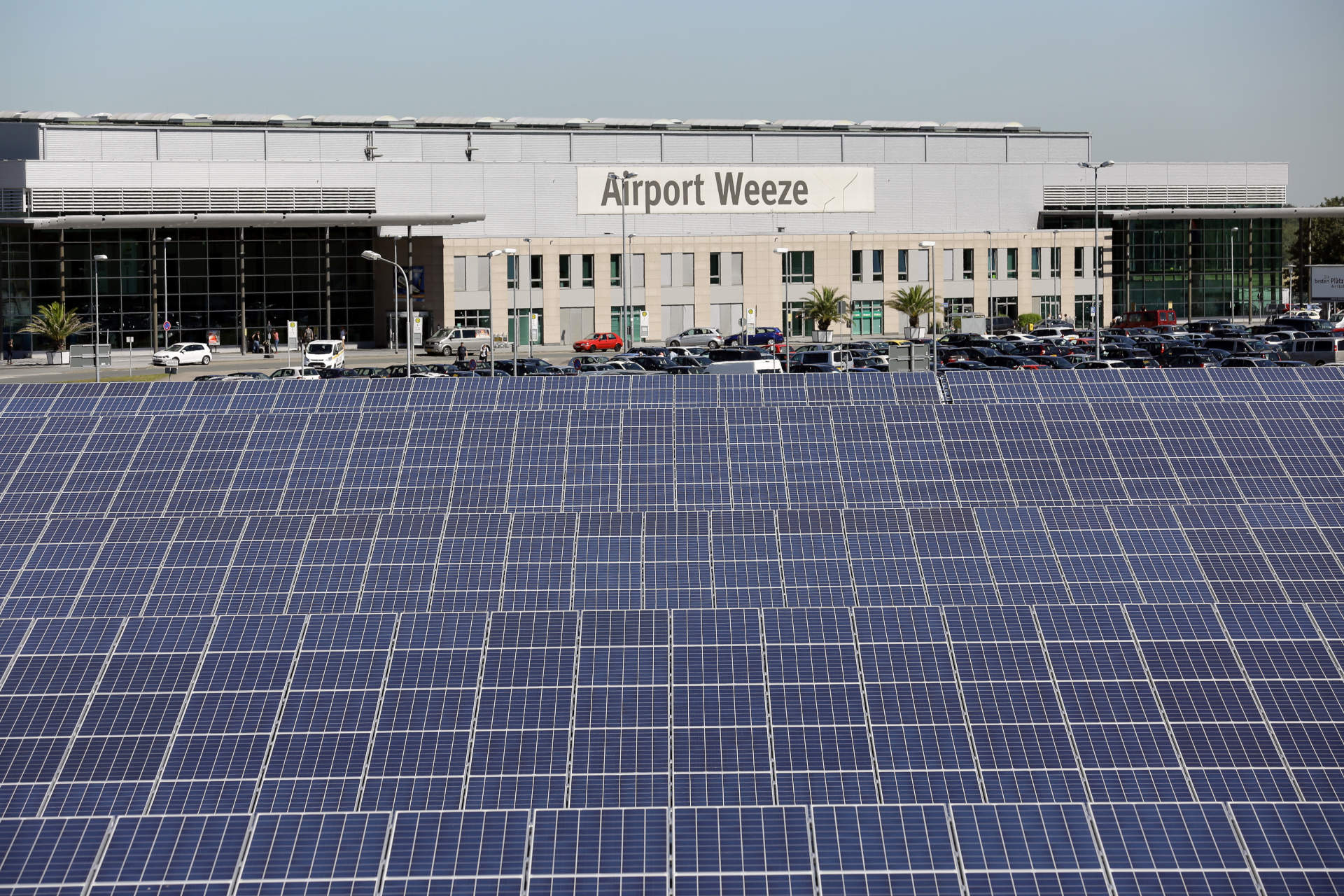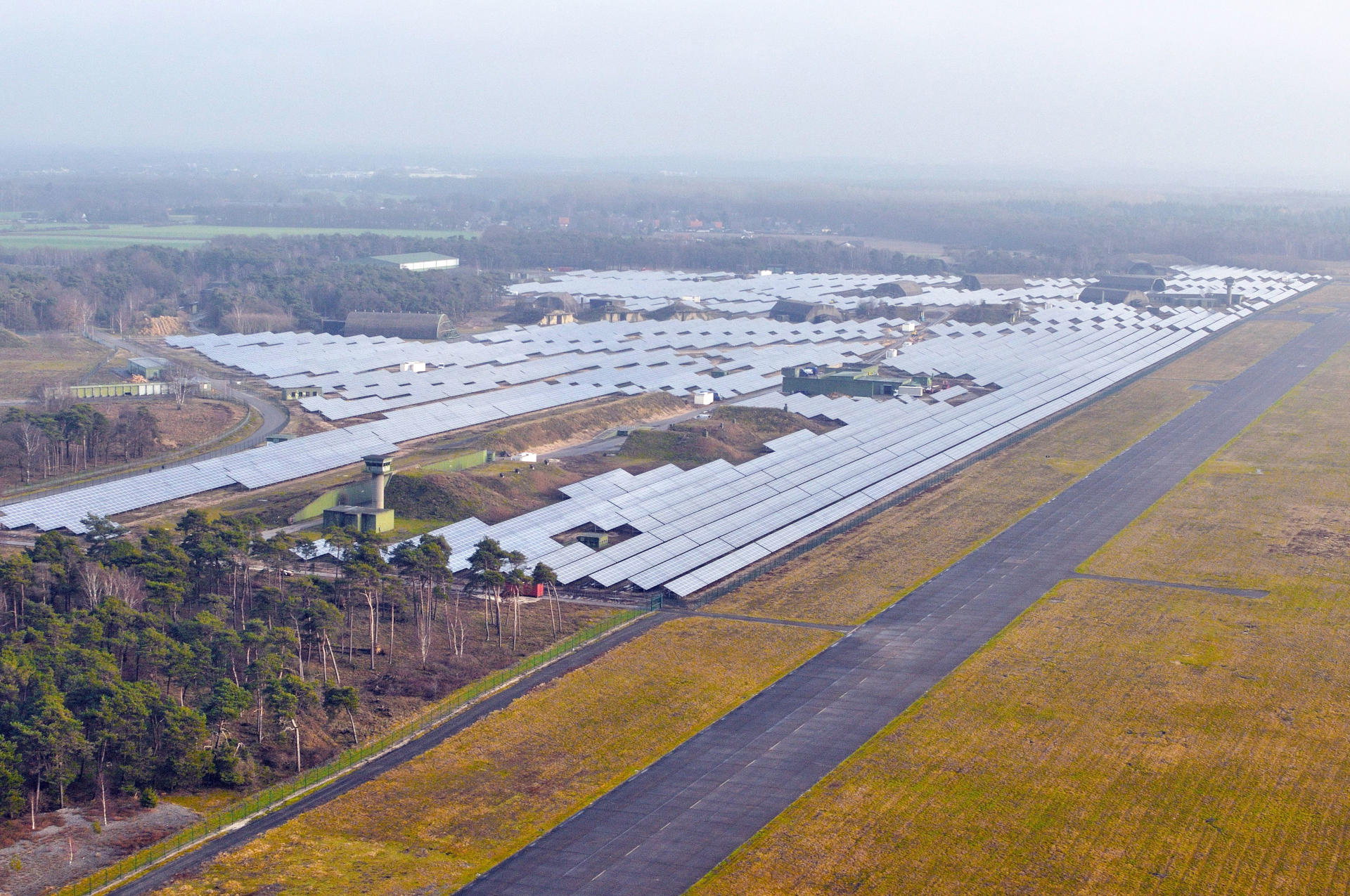The Solar Power Plant
In 2018, Airport Weeze achieved its goal of becoming CO2-neutral: Since 2011, the largest photovoltaic system in North Rhine-Westphalia has been on its site, generating significantly more energy than the airport itself uses. The plant, built in 2011, has an output of around 14 megawatts and produces around 13 million kilowatt hours of electricity per year. This corresponds to the amount of electricity for around 3,300 four-person households. In addition, more than 8,500 tons of carbon dioxide (CO2) are saved each year. At the end of 2016, a further solar power plant was installed in a car park, so that now a total output of 18 megawatts is generated. The 75,000 solar panels produced a total of 16.739.124 kilowatt hours renewable energy in 2021; the airport’s total electricity consumption amounted to 4.936.453 kilowatt hours in the same year.
100 percent of the renewable electricity is fed into the grid in accordance with remuneration rules of the Energy Feed-In Act (EEG) – and of course the majority being used directly at the airport. With its solar power plant, the third largest airport in NRW already meets today the standards required for energy generation in 2050 with reference to the energy transition policy.
The photovoltaic system was built on an area of 300,000 square meters to the north east of the airport site. There, more than 87,000 square meters of module surface convert sunlight into electrical energy. The airport company has leased the area to BaySolar AG (Freising), which has invested around 25 million euros in the construction of a solar power plant through a subsidiary based in Weeze.
While passengers can admire the large photovoltaic system during take-offs and landings, the second area of solar energy generation is permanently visible: in 2016, Airport Weeze installed a solar carport system on car park P2. 1,350 parking spaces were covered with solar panels, which offer a climate-friendly weather protection for the car near the terminal. The 4-megawatt system produces electricity for more than 1,000 four-person households and saves over 2,800 tonnes of CO2 per year.
Another PV system was connected to the grid at the end of 2023 – this time to supply the airport itself. With a module surface area of 2.1 hectares and around 10,760 solar modules, it produces 4.74 million kilowatt hours of electricity.
The solar park at Weeze Airport is an example of sustainable energy generation and contributes to the energy transition. CO2 emissions are reduced and the proportion of renewable energies is increased.





